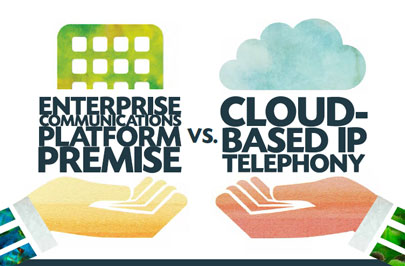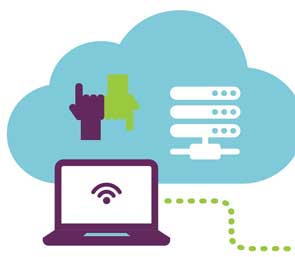How to Benchmark and Rank Unified Communications (UC) Technology
 It should come as no surprise to anyone that companies are still struggling to understand how to make the right technology decisions. Too often, businesses make important growth decisions based on a narrow understanding of their IT environment—which can have a negative impact down the line as the environment continues to change.
It should come as no surprise to anyone that companies are still struggling to understand how to make the right technology decisions. Too often, businesses make important growth decisions based on a narrow understanding of their IT environment—which can have a negative impact down the line as the environment continues to change.
To avoid error when choosing new technologies, businesses need successful growth strategies that make use of innovative technologies. In order to determine what your business’s growth strategy should encompass, you need a thorough understanding of your market. By assessing the technical innovations within your market, your industry’s key challenges, your customers, and the best practices that have led to your own past successes, your business can preemptively ward off future regret by making the right technology choice the first time.
Key Industry Challenges
The businesses that are most equipped to meet the challenges of modern communications are already employing UC technology and infrastructure. They specifically leverage these new technologies to enhance the quality of communications for employees and customers, while also utilizing innovative UC technology and infrastructure as a means to optimize network traffic as network demand changes.
The following are two of the most common enterprise communications challenges that are addressed by UC technological innovation, and the most popular traits that innovative UC leaders have to answer those stresses:
• IT Infrastructure Stress—the transformation to modern unified communications platforms has seen enterprise communications become more reliant on IT infrastructure—particularly application and media servers, data center and campus IP networks, wide area networks, media gateways and session border controllers.
• Bandwidth Sensitivity—in converged voice, video, and data environments, bandwidth-sensitive IP telephony solutions are now sharing resources with other enterprise applications, with real time applications media traffic granted priority access through configurations set by network administrators. While Server and desktop virtualization has allowed UC to become increasingly dynamic in terms of on-demand capacity, the underlying infrastructure that carries voice and video traffic has largely remained static and unadaptable to utilization spikes.
Trait 1: Innovation-driven leaders are beginning to take a more holistic view of UC infrastructure.
Rather than treating the UC platform, data centers, and enterprise networks as discrete components, innovators are applying emerging standards within their own solutions to deliver a new level of intelligence and self-awareness to UC infrastructure. This ultimately allows UC systems to identify sources of trouble, and then adjust themselves to accommodate spikes in traffic or demand.
Trait 2: Innovative leaders enable UC and enterprise infrastructure solutions to thrive together rather than coexist.
Rather than having a static UC platform running alongside static infrastructure solutions, innovators are building intelligence and feedback loops between UC platforms and the enterprise network that empowers them. This allows the UC solution to preemptively prepare the infrastructure for planned events that will potentially stress it. Also, with the many existing manual configuration processes automated, the enterprise infrastructure is able to become as dynamic as the solutions it serves.
Key Benchmarking Criteria for Innovative UC Technology
Each year, Frost & Sullivan determines how best-in-class companies worldwide manage growth, innovation, and leadership. Based on the findings of their best practices research, they present an annual Global Technology Innovation Leadership Award in Unified Communications.
If you’re wondering how to differentiate between UC innovators, Frost & Sullivan has created criteria for benchmarking leading unified communications solutions.
1. Uniqueness of Technology
2. Impact on New Products/Applications
3. Impact on Functionality
4. Impact on Customer Value
5. Relevance of Innovation to Industry
Best Practice Award Analysis for NEC
NEC has been an early proponent, adopter, and provider of many new networking technologies. Frost & Sullivan analyzed NEC’s UNIVERGE 3C and UCaaS Solutions for technological innovation. Part of their findings include:
Impact on New Products/Applications
NEC’s UNIVERGE portfolio of solutions are built on key pillars of NEC’s IT Empowered Framework and Smart Enterprise programs, the foundation of which is utilizing adaptable network infrastructures. NEC’s UC products are therefore fully-distributed and data center-ready, virtualized UC solutions. In contrast, traditional network architectures require a near duplication of hardware and costs to achieve similar levels of business continuity and disaster recovery capabilities.
Impact on Customer Value
NEC’s innovation in delivering a high-level of integration between enterprise communication applications and the underlying infrastructure ultimately drives customer value through automation and optimizations. Integration with Software-Defined Networks (SDN) enables real-time communications between the UC platform and the network. NEC’s UNIVERGE 3C platform programmatically adjusts the infrastructure to work around trouble or allocate additional network resources to cope with spikes in demand without administrator interaction.
Global Technology Innovation Leadership Award
According to the 2014 Global Technology Innovation Leadership Award Report, NEC’s holistic approach to deploying enterprise communications solutions, and the level of automation and dynamic flexibility inherent in NEC UC infrastructures should appeal to customers and serve as a roadmap for the direction of communication networks.
But don’t just take our word for it.
Learn more about the criteria used by Frost & Sullivan in awarding the 2014 Global Technology Innovation Leadership Award in Unified Communications Infrastructure




 Each year at
Each year at 
 The need for modernization among IT departments is a trend that is becoming increasingly relevant as IT departments are constantly faced with generational shifts in technology. The pressures of modern business require that IT departments close the gap between yesterday’s IT implementations and tomorrow’s demands.
The need for modernization among IT departments is a trend that is becoming increasingly relevant as IT departments are constantly faced with generational shifts in technology. The pressures of modern business require that IT departments close the gap between yesterday’s IT implementations and tomorrow’s demands.

 Many organizations are improving communications through the virtualization of real time applications such as voice and unified communications (UC). All the financial and practical benefits of traditional server virtualization still apply as companies consolidate voice and UC into their data center. Namely: reduced capital expense, improved efficiencies, reduced risk, plus the savings on operational expenses since voice and UC can be managed with all other business applications on shared infrastructure.
Many organizations are improving communications through the virtualization of real time applications such as voice and unified communications (UC). All the financial and practical benefits of traditional server virtualization still apply as companies consolidate voice and UC into their data center. Namely: reduced capital expense, improved efficiencies, reduced risk, plus the savings on operational expenses since voice and UC can be managed with all other business applications on shared infrastructure. 


 Whether you’re thinking about deploying a cloud, premises-based or hybrid approach to unified communications, there are a number of factors to be considered.
Whether you’re thinking about deploying a cloud, premises-based or hybrid approach to unified communications, there are a number of factors to be considered. 


